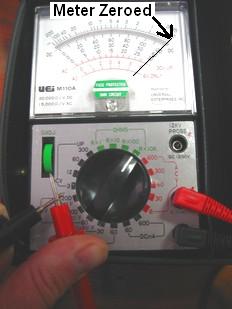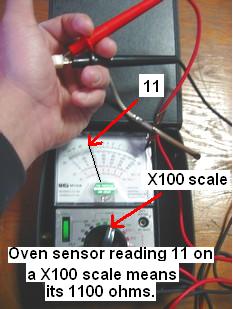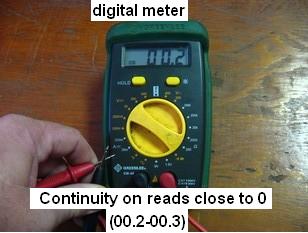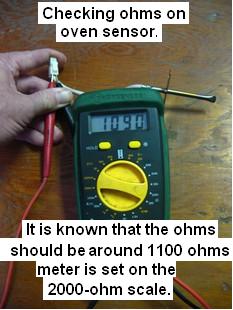Using An Ohmmeter
In this guide I will explain how to use an ohmmeter in order to help you repair
your appliance more efficiently. they are are essential tools in appliance
repair. If you don’t have one note that some repairs can be done without ever
using one, but if you do happen to need one you can pick on up cheap at
Wal-mart. Please note before reading this page that ohmmeters are to be used
with the power disconnected from your appliance or whatever you may be checking.
Failure to do so can result in a destroyed ohmmeter or worse injury to yourself.
How To Use An Ohmmeter Video
Continuity- Continuity means that
current can flow. When an ohmmeter is placed across a closed circuit it will
read ohms this means that the circuit has continuity.
Closed-When the term closed is used in relation to an
electrical circuit it means that current can flow or it has continuity.
Open-When the term open is used in relation to an
electrical circuit it means current cannot flow or no continuity.
Infinity ohms-This is what an ohmmeter reads when
placed on an open circuit. On an analog meter infinity ohms is when the needle
doesn’t move at all and on a digital meter infinity ohms is 1 .
USING AN ANALOG METER
Click here to buy an analog ohmmeter
Throughout this website I will ask you do tests that require you to use these meters. On this page I will explain how to use a meter. First, if you don’t already have one you need to buy one. I recommend an analog meter because they are cheaper and will last longer. I use an analog meter, it’s a little old school but I have been through about six digital meters and that old analog meter still works. You can buy them at Wal-Mart or Lowe’s, places like that.

Once you have an ohmmeter, make sure the wires are plugged in and the batteries are installed. Now set the meter to ohms (there will be different scales for ohms I will get into that later for now it doesn’t matter).
When you touch the two leads together, the needle should move to zero. This means that you have continuity (complete circuit) between the leads. If the needle doesn’t move, your wires are not connected or the batteries are not installed.
So any
time I ask you if something has continuity, put the meter leads on it and if
the needle moves the answer is yes. If the needle doesn’t move then it has no
continuity.
Note that when you do this make sure the meter is set to the highest setting and anytime you don’t know what the ohms should be set it to the highest setting.

Next if the ohm reading of a device is know you will need to set and calibrate your meter before checking the device.
First you need to set the meter. You need to set the meter at the lowest scale that is higher than the resistance of what you are checking.
For example, if I am working on a range and I want to check the sensor, I know the sensor should be about 1100 ohms, so I would set the meter to RX100. If the sensor is good, the needle should move to 11 (11X100=1100), which would mean the sensor is 1100 ohms. But if I check that same sensor with the scale set at RX1 the needle may not move at all. Now if I check the same sensor with the scale set at RX10000 the needle will move to zero.
Now you need to calibrate the meter. To do this put the meter on the scale that you intend to use, touch the leads together then adjust (there should be an adjustment knob) the meter until the needle is on zero (note you should calibrate every time you need to know the exact ohms). Remember if I only ask if something has continuity it doesn’t matter where the needle moves, just that it moves. For example, if I am checking a heating unit I would set the meter to ohms and touch leads together just to see if the meter works. Then touch the heaters wire terminals and if the needle moves the heater is good.
USING A DIGITAL METER
Click here to buy a digital ohmmeter

If you buy a digital meter everything will be the same only on a digital display. When you touch the wires together, the reading will be close to zero like .2.
This means you have continuity (complete circuit), but when you need to know the exact ohms, you need to set the scale. On a lot of digital ohmmeters you have just two scales ohms and like 20k some more. Set the meter at the lowest scale that is higher than the resistance of what you are checking. If you set the scale too high then you sacrifice accuracy if you set it too high you will wind up with a reading like .0025.
For example,
if I am checking a stove and I want to know the exact ohms of the sensor, I know
the sensor will be approximately around 1100 ohms. I would set the meter to
the closest scale to 1100 ohms without being lower.
